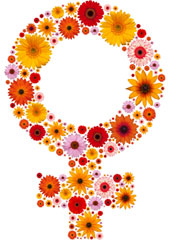Motherhood: A Double-Edged Subject for Migrant Caregivers
The demand for domestic care workers is continually rising: what makes these workers one of the most vulnerable groups in the global labor market?
May 11, 2013

According to the 2013 report on domestic and care work by the International Labour Organization (ILO), at least 53 million workers, 83% of them women, are now working in private households worldwide.
A majority of these workers are migrants who are often undocumented and performing their work under unclear terms of employment. They are one of the most vulnerable groups in the global labor market.
The 2011 ILO’s adoption of the Domestic Workers Convention No. 189 was a major step towards recognizing domestic and care activities as work and ultimately acknowledging its economic and social value.
Two years later, however, only a minority of nation states has taken steps toward ratification.
The convention was rightly celebrated as essential for challenging the existing exclusion of domestic workers from both national and international labor law and social protection.
Given that this type of work is overwhelmingly branded as female labor, it also represents a step toward advancing gender equality in the workplace. But so far its leverage has turned out to be disappointing and the real-life effects so far are rather sobering.
That is all the more disappointing, as across the “Global North,” the demand for nannies and caregivers for the elderly is rising sharply. By 2020, one out of six Americans and Europeans will be an elderly person.
Female labor force participation in both Europe and the United States has grown dramatically since the 1950s.
The resulting short fall in sufficient social service provision for children, along with parents’ preference for in-house private childcare, has driven the quest for nannies and elder caregivers.
As a consequence, this low-wage care sector has attracted migrant women from poorer countries, becoming the largest employment sector for women worldwide.
Employers of migrant care workers wish to compensate for the physical absence of the working mother from home by replacing her with a female caregiver.
As University of California Berkeley sociologist Arlie Hochschild has explained, replacing mothers means that nannies or care workers are expected to provide not only physical care, but often also “love” as a kind of “emotional surplus value.”
At the same time, employers are wary of the possible conflicts emerging if children begin to regard their nannies as mothers, or if a frail elder considers his/her caregiver as a daughter.
In order to avoid status and role confusions, both employers and employees require comprehensive emotion management.
Generally, both sides have a clear idea of what “good motherhood” or “good elder care” entails.
But while on the care-receiving side, an employing mother can maintain, even boost, her status as a “decent” parent and/or dutiful daughter, the migrant nanny or elder caregiver who leaves her own family behind generally loses or runs the risk of losing this status in her country of origin.
Ironically, many migrant women who leave their countries of origin because they want to provide better living conditions, education and consumer goods for their children find themselves torn between incompatible demands.
On the one hand, their remittances are regarded as welcome contributions to the private household income and to the national budget.
On the other hand, they are shamed for leaving their children behind. Moral outrage about so-called “abandoned children” comes to dominate public discourses both in sending countries and the Western media.
In my analysis of a total of 875 Polish and Ukrainian newspaper articles published between 1997 and 2008, I found a variety of derogatory terms, such as “Children Left Behind,” “Home Alone Children,” “Abandoned Children,” “Social Orphans,” “Euro-Orphans’ and “White Orphans.”‘
Savor the word: stay-behind children are now characterized as “Euro-Orphans.”
In fact, this term is a misnomer, as the vast majority of these children are not abandoned but cared for by stay-behind single parents, grandmothers or other family members.
The driving forces in this debate are experts like teachers, social workers and psychologists, who claim that children whose mothers work abroad perform badly in school and “act like orphans.”
NGOs and children’s rights organizations, often supported by churches or Western benefactors, argue that leaving children behind (even if they are cared for by family members) is a violation of children’s rights.
So far, however, there is no convincing evidence that children slip into deviance and bad educational performance if their mothers do not care for them.
But this seems to be irrelevant once the phenomenon has been configured in terms of “abandonment” and “orphanage.”
As a reaction to the public outcry, many Central and Eastern European sending countries have taken actions to limit the migration of mothers in order to protect their children.
Given the dramatic economic and social problems of sending countries, the debate may also indicate a common fear of losing control over community and society as a whole, as mothers — seen as “symbols of the nation”— go transnational.
Interestingly, debates about “abandoned children” have cropped up not only in Europe and the United States, but also in China, South America and Africa.
Surprisingly, 56 years after Betty Friedan first triggered the feminist debate by rejecting the “feminine mystique,” with its notion that caregiving was a duty assigned to women alone, traditional ideals of motherhood still prevail.
The complete absence in the care debate about “good fatherhood” in both receiving and sending countries is evidence of this.
While internationalized education and job markets create new challenges for middle-class families, motherhood in the 21st century is about the obligation to breed quality children and citizens.
To support their children’s alignment to global markets, mothers need skills and money.
It is precisely the lack of money that causes some mothers to leave their countries of origins and seek to provide for their children from abroad.
But then they must pay the price of losing their good motherhood status.
Takeaways
Debates about "abandoned children" have cropped up in Europe, the United States, China, South America and Africa.
Replacing mothers means nannies or care workers are expected to provide not only physical care, but also "love."
The migrant caregiver who leaves her own family behind runs the risk of losing her status as a "good mother" at home.
Many Eastern European countries have acted to limit migration of mothers, to "protect" children.
There is no proof children slip into deviance and bad educational performance if their mothers do not care for them directly.

